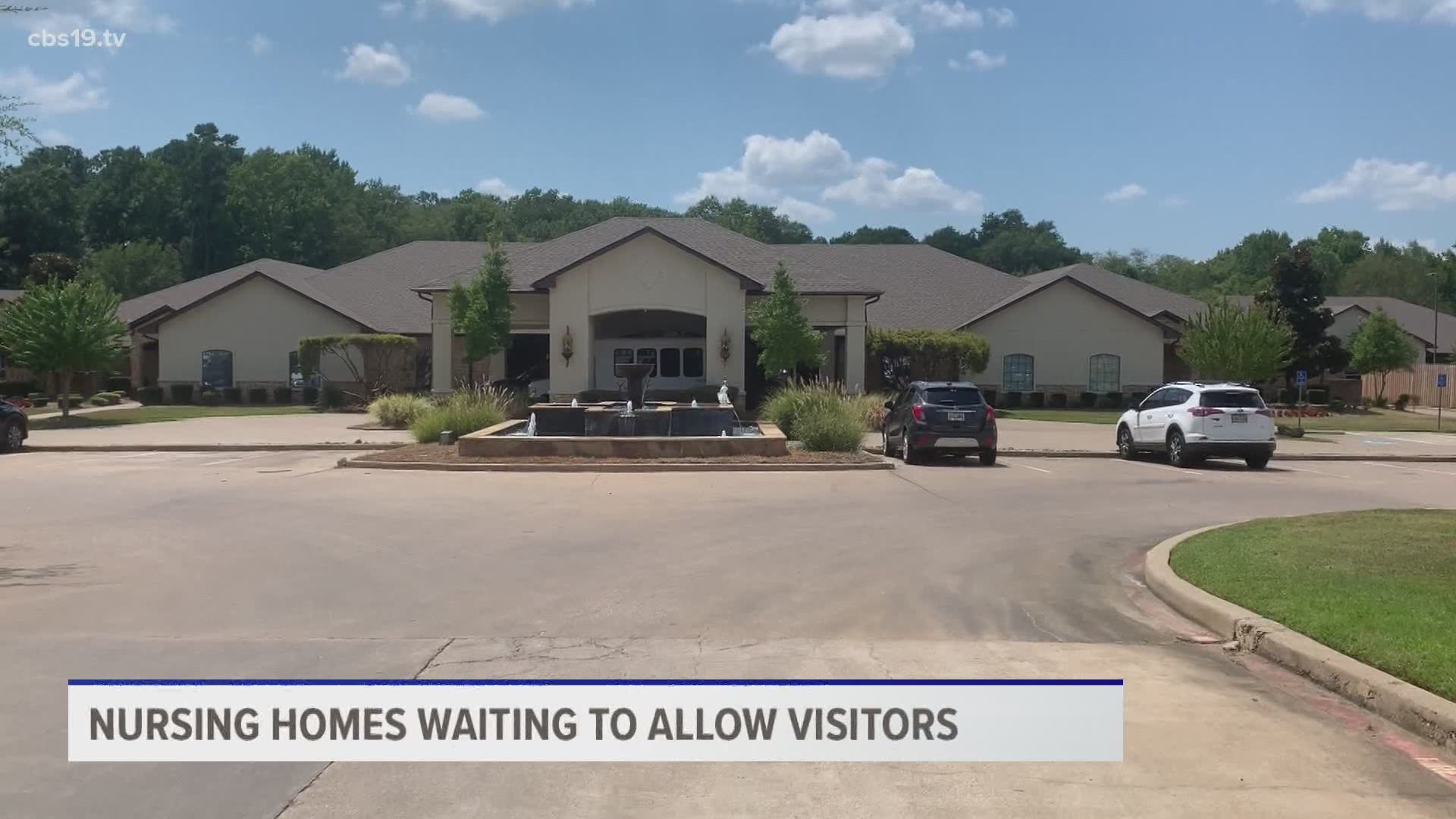TYLER, Texas — It is now possible for Texans to see their loved ones who live in nursing homes and assisted living centers, but that does not mean relatives can walk in the doors just yet.
Senior care administrators around the state are trying to determine the best way to follow guidance released by the Texas Health and Human Services Commission (HHSC) on Thursday.
“It is a little bit overwhelming. It came rather quick,” Heather Moore said.
Moore, the administrator of Providence Park Rehabilitation and Skilled Nursing, says she anticipated an announcement about allowing visitors to come at some point, but had no indication of the timing until she heard about it from the news. She says the release did not provide enough detail to start scheduling visitors.
“Even as of today,” she said, “we don’t have our guidelines on exactly what that’s going to look like. But we’re hoping today or over the weekend that we’ll get that so we can start implementing it.”
Moore says she fielded lots of phone calls Friday from relatives eager to come see their loved ones again. “A lot of excited family members,” she said, “so we expect to see a lot of smiling faces and renewed energy just from being able to see their loved ones.”
The excitement comes from nearly five months of solitude. Visitors were prohibited from nursing homes and assisted living facilities at the beginning of the pandemic due to the increased likelihood of severe symptoms from COVID-19 for seniors and people with underlying health conditions.
A visitor to Providence Park Friday afternoon could be seen sitting at the outside of a glass door, putting her hand on the glass while a resident on the inside did the same. Moore says music groups have performed through windows for residents, and staff members have attempted a variety of creative ways to help the residents connect with their families.
“When we first shut down,” she recalled, “a husband in my office—very emotional—he said, ‘you know, I’ve seen my wife every day for 65 years. How can I not see her?’”
While Moore wants visitors to be able to return, she worries about the possibility one of them will bring COVID-19 into the facility.
“It’s very scary for us,” she said. “Just because of how hard it is on this population of patients. And so, we, it’s a hard position to be in, but we do know that’s it’s important that they’re able to see and interact.”
According to the HHSC, more than 57% of the state’s 1,223 licensed nursing homes have active cases of COVID-19 among their residents or staff, making them unable to allow visitors. More than 17% of the state’s 2,020 assisted living centers have current outbreaks, as well.
Those facilities without any active cases of COVID-19 may allow visitors. Visitors to nursing homes will not be allowed inside, while visitors to assisted living centers will have Plexiglas barriers between themselves and the resident. Physical contact, such as a hug, is forbidden at any senior care center.
"These families and residents are more than deserving of these new guidelines that allow for limited visitation," Kevin Warren, President and CEO of Texas Health Care Association (THCA), said. "Many of us could not fathom the kind of prolonged separation from our own loved ones that they have endured, and I am glad that we have finally began to tackle this in Texas like other states."
Moore says she expects the rules regarding visitors to be relaxed in phases, depending on the health conditions at the specific facility and the rate of transmission in the greater community.
“So, it won’t quite be 100% open, but it’s steps that are taking us in the right direction,” she said. “So, it’s a good thing.”
Visitors are encouraged to call the facility before attempting to see their loved ones. Moore says most long-term care providers will create visitation schedules and closely monitor the number and duration of visits.
"Testing has been an ongoing challenge," Warren said. "Whether its administration costs, access, or delays in receiving results, there have been myriad of challenges in implementing a predictable and reliable testing protocol for long-term care. We look forward to working with HHSC and state leaders on this component.
"If we are finally acknowledging the need for safe visitation to begin, then it is essential that we have a commitment to a long-term solution for adequate and rapid testing in our facilities."

